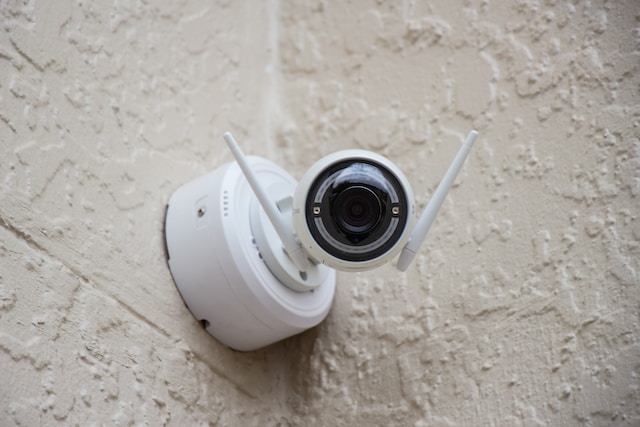While rules and regulations can be difficult to navigate at times, most business leaders are well aware of their importance. By empowering a trusted independent entity to ensure all businesses of a similar nature operate in compliance with the same standards, businesses can embrace healthy competition without posing avoidable risks to workers and customers.
Provided business leaders are consulted about industry-specific regulations, the adoption of such standards can be economically worthwhile. However, with data suggesting startup costs for small businesses looking to achieve regulatory compliance can be over $80,000 on average, opinions regarding strict rules and guidelines are by no means universally positive.
Much of the expense associated with compliance involves the cost of developing and later maintaining compliance management technologies. This means that for businesses to reasonably avoid regulatory missteps, resource-intensive monitoring equipment must be in operation.
Thankfully, there are ways for modern businesses to enjoy the benefits of reasonable rules and regulations without pouring resources into developing technologies. To explore this idea further, let’s look into how leaders are embracing data security and compliance with RegTech-enabled cameras alongside other similarly positioned compliance monitoring technologies.
Why is Compliance Monitoring Equipment Important?
As new technologies are introduced into the workplace, it can become increasingly difficult to ensure compliance with industry standards. In particular, smart technologies and AI-informed systems can raise concerns regarding factors like data privacy and information security.
According to recent reports, at least 33% of organizations are currently using some form of AI to support business operations, with 42% planning to implement AI technologies at some point in the near future. This growing adoption of AI tools must be carefully monitored, with 80% of AI experts believing such tools may lead to the unintentional misuse of private data.
Without careful monitoring, the sensitive data contained within AI-informed systems could be exposed in unforeseen ways. Ultimately resulting in a breach of US data privacy regulations.
If essential systems are governed by AI-powered software permanently connected to the internet, how can leaders ensure that sensitive data is not vulnerable to cyber-attacks? Alongside strict regulations, the introduction of RegTech equipment may provide an answer.
What is RegTech and RegTech Enabled Equipment?
RegTech, or Regulatory Technology, is a term used to describe commercial technologies and systems specially designed to meet complex industry-specific regulations.
RegTech equipment utilizes in-process monitoring systems and analytics tools to understand industry-specific regulations, continually assessing all active devices to maintain compliance.
In practice, the deployment of RegTech equipment removes much of the expense associated with developing unique compliance monitoring systems. Helping staff to analyze compliance in real-time and act as a cost-effective way to avoid regulatory and data privacy concerns.
Considering that the average cost of non-compliance (factoring in things like loss of revenue, customer trust, and productivity) totals almost $15 million, a figure that’s risen more than 45% in the last decade, the deployment of well-designed RegTech can benefit businesses greatly.
Examples of Regulatory Technology
RegTech solutions are typically created to support regulatory compliance within traditionally high-security industries, namely businesses operating in the finance, banking, energy, and communications industries. However, RegTech can be effectively deployed within almost any industry, provided business leaders and security staff implement such solutions intelligently.
In short, the aim of RegTech solutions is to streamline and automate compliance operations to ensure that businesses are always operating in line with industry best practices. Tools can alert staff of weaknesses and suggest actionable fixes.
To explore RegTech systems further, below are some examples of this technology in action.
RegTech Enabled Security Cameras
Considering the widespread use of AI and Internet Protocol (IP) CCTV camera systems among modern businesses, most employers will find themselves in possession of sensitive data pertaining to staff and customers. To maintain compliance with US data privacy rules, teams must ensure that this data is suitably stored and protected from unauthorized access.
By working with a certified commercial security camera installer, organizations can develop RegTech-enabled camera systems designed to automatically maintain compliance with data privacy standards. Systems will continuously monitor data collection and storage processes to ensure compliance, instantly alerting staff of exploits to ensure issues are fixed promptly.
Authorization and Identity Management
Integrating RegTech solutions into existing access control and identity management systems can help businesses maintain compliance with a wide range of regulatory requirements. For example, if an access request is made to view sensitive data, RegTech software can be used to analyze issued credentials, checking against multiple sources to verify the request.
This can be combined with RegTech-enabled cameras to improve access security. Entry to high-security areas like server rooms or file storage areas can be locked behind access readers and RegTech cameras. For access to be granted, physical credentials and biometric data must be presented, with RegTech software ensuring this data is appropriately handled.
Real-Time Transaction Monitoring Systems
All businesses that regularly process financial transactions and store customer payment data must comply with strict regulations. This includes the PCI DSS standard, federal data privacy laws, and state-specific regulations like the California Consumer Privacy Act (CCPA). Teams can utilize RegTech solutions to monitor transactions in search of irregularities continuously.
RegTech transaction monitoring systems can be used to automatically identify suspicious transactions, organizing such events in a list of priority based on multiple criteria. RegTech tools will compare past transactions, source data, and IP activity against current regulatory thresholds, flagging incidents that require immediate attention to improve threat responses.
Anti-Fraud Compliance Solutions
RegTech solutions can also be used to identify attempted fraud, block fraudulent activity, and direct business security teams toward events that should be further investigated. Utilizing such systems can help businesses mitigate the damage caused by fraudulent actions and maintain compliance with anti-fraud laws like the False Claims Act and similar regulations.
Much like RegTech transaction monitoring systems, anti-fraud solutions are able to monitor activity in real time, alerting admins of suspicious events as promptly as possible. Helping security teams to isolate affected systems and ensure the safety of sensitive information.
In Summary
As business technologies continue to become more intelligent, with an increasing reliance on interconnectivity and automation, businesses across most major industries are likely to face challenges related to compliance. By investing in specialized RegTech solutions, like security cameras and identity management systems, teams can avoid several risk factors.
Rather than risk the expense associated with internal technological developments and the cost of non-compliance fines, businesses can utilize RegTech solutions to automate threat responses. This undertaking can help teams maintain compliance with strict data privacy, anti-fraud, and other industry-specific laws, protecting businesses from regulatory issues.
Bio
Srushti Shah is an ambitious, passionate, and out-of-the-box thinking woman having vast exposure in Digital Marketing. Her key focus is to serve her clients with the latest innovation in her field leading to fast and effective results. Working beyond expectations and delivering the best possible results in her professional motto. Other than work, she loves traveling, exploring new things, and spending quality time with family. Reach out to Srushti Shah on LinkedIn.

